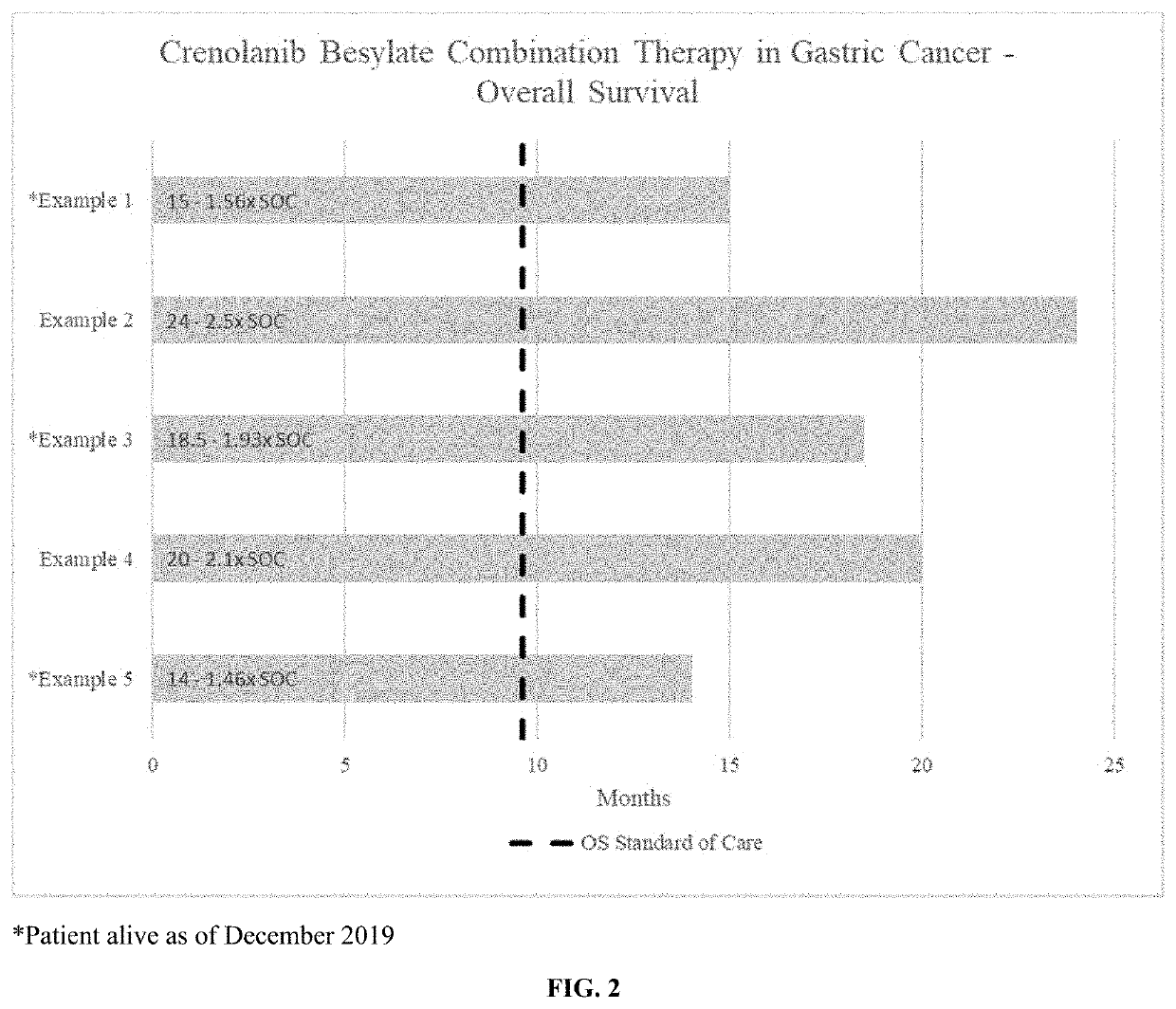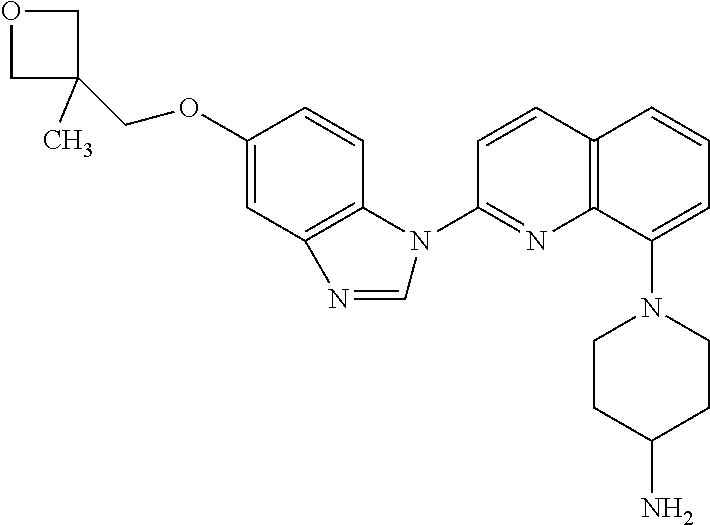Crenolanib combination therapy
a combination therapy and drug technology, applied in the field ofcrenolanib, can solve the problems of discontinuation of planned dose escalation and end of treatment, and achieve the effect of reducing side effects
- Summary
- Abstract
- Description
- Claims
- Application Information
AI Technical Summary
Benefits of technology
Problems solved by technology
Method used
Image
Examples
example 1
[0060]Effect of crenolanib besylate combination therapy in a gastroesophageal junction (GEJ) adenocarcinoma patient with metastases in the liver: Partial Response per RECIST 1.1 criteria.
[0061]A 53-year-old male was initially diagnosed September 2017 with esophageal cancer. The patient was treated with palliative FOLFOX chemotherapy: a combination of a fluoropyrimidine (fluorouracil, or 5-FU), a platinum compound (oxaliplatin), and leucovorin. Palliative chemotherapy began late September 2017 and continued until January 2018. Oral capecitabine was then given to the patient for 5 months until the patient's cancer progressed June 2018 when a CT scan revealed that the patient had progressive disease and the cancer had metastasized to the liver, upper stomach, and lymph nodes.
[0062]In response to progression on first-line therapy, the patient was provided oral crenolanib besylate (PDGFRβ inhibitor) in combination with paclitaxel and ramucirumab (VEGFR2 inhibitor) on a clinical trial for...
example 2
[0063]Effect of crenolanib besylate combination therapy in a stage IIIB, gastric adenocarcinoma patient with metastatic disease to lymph nodes: Partial Response per RECIST 1.1 criteria.
[0064]A 68-year-old female was diagnosed September 2015 with stage IIIB metastatic cancer in the stomach and lymph nodes. She underwent a partial gastrectomy and started adjuvant FOLFOX chemotherapy October 2015. She remained on the FOLFOX regimen for 12 cycles until April 2016. Despite adjuvant chemotherapy treatment, a CAT scan October 2016 showed increased metastatic disease in the lymph node, which prompted palliative chemotherapy with fluorouracil. The patient continued to progress and was found to have metastatic disease to the gastrohepatic ligament, lungs, and lymph nodes in October 2017.
[0065]In response to progression on first-line therapy, the patient was provided oral crenolanib besylate (PDGFRβ inhibitor) in combination with paclitaxel and ramucirumab (VEGFR2 inhibitor) on a clinical tria...
example 3
[0066]Effect of crenolanib besylate combination therapy in a stage IV, invasive gastric adenocarcinoma patient: Stable Disease per RECIST 1.1 criteria.
[0067]A 50-year-old male was diagnosed with invasive gastric cancer in May 2016. The tumor was found to arise from Helicobacter pylori (H. pylori)-associated chronic gastritis. The patient was treated with neoadjuvant FOLFOX chemotherapy. After 12 cycles of FOLFOX chemotherapy, the patient underwent a partial gastrectomy and lymphadenectomy in November 2018. Despite 6 months of neoadjuvant chemotherapy and a surgical approach, a follow-up CT scan and laparoscopy in April 2018 revealed the cancer had metastasized to the ileum and peritoneum.
[0068]In response to progression on first-line therapy, the patient was provided oral crenolanib besylate (PDGFRβ inhibitor) in combination with paclitaxel and ramucirumab (VEGFR2 inhibitor) on a clinical trial for second-line advanced esophagogastric adenocarcinoma (NCT03193918). At baseline, the C...
PUM
| Property | Measurement | Unit |
|---|---|---|
| Time | aaaaa | aaaaa |
| Time | aaaaa | aaaaa |
| Time | aaaaa | aaaaa |
Abstract
Description
Claims
Application Information
 Login to View More
Login to View More - R&D
- Intellectual Property
- Life Sciences
- Materials
- Tech Scout
- Unparalleled Data Quality
- Higher Quality Content
- 60% Fewer Hallucinations
Browse by: Latest US Patents, China's latest patents, Technical Efficacy Thesaurus, Application Domain, Technology Topic, Popular Technical Reports.
© 2025 PatSnap. All rights reserved.Legal|Privacy policy|Modern Slavery Act Transparency Statement|Sitemap|About US| Contact US: help@patsnap.com



